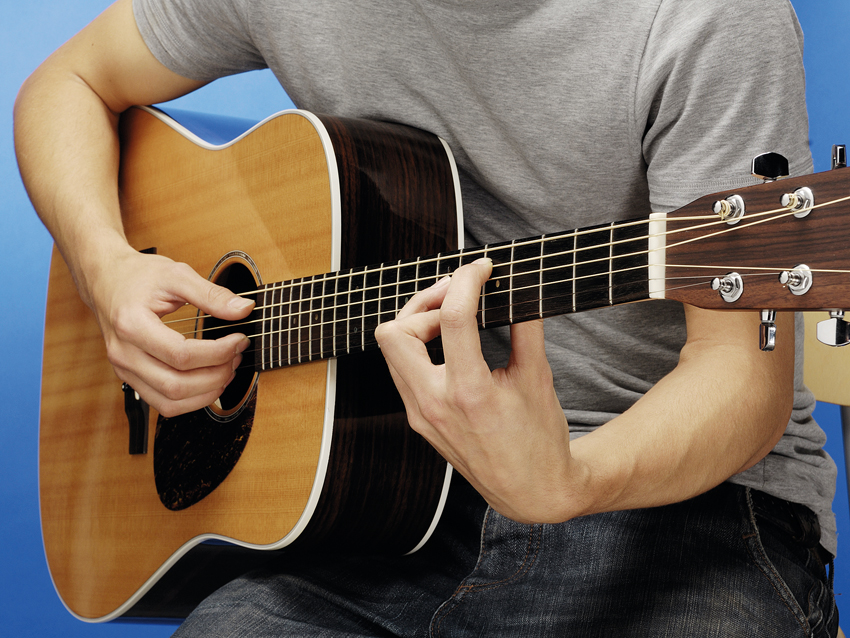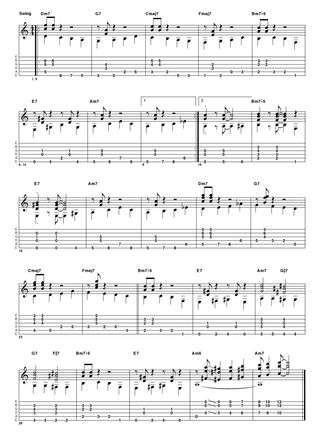Acoustic Guitar Lessons: Walking basslines
How to add jazz-style comping to partial chords, with free tab

A versatile guitarist can turn his or her hand to accompanying in a variety of styles, so here we'll look at walking basslines - a method of providing jazz-style accompaniment (or 'comping', to use the vernacular).
The technique incorporates partial chords into a moving bassline, creating a rich arrangement that recalls the sound of a bassist and guitarist (or pianist) playing together. Acoustic guitar players such as Martin Taylor, Pat Metheny and Tuck Andress are true masters of this - but how do mere mortals approach this method? Read on...
Passing notes
How do I know what notes to play in the bassline?
It's basically a case of joining the dots. Each bar begins on the root note of the chord and 'walks' to the next chord's root note by means of the adjacent notes in the relevant scale (in the case of our example tune, A minor).
A couple of notes sound out of key though. Why is this?
A little dose of chromatics does no harm. A common trick is to approach a chord's root note from a semitone above or below it (for example, the end of bar 13).
The overall sound feels like more than the sum of its parts.
Get the MusicRadar Newsletter
Want all the hottest music and gear news, reviews, deals, features and more, direct to your inbox? Sign up here.
Well, the idea is to create the illusion of hearing more than is actually there - a walking double bass, a piano playing chord stabs, and so on.
I like it. Those chord changes sound familiar, though.
It's a well-used progression: Autumn Leaves, Still Got The Blues, even I Will Survive all follow a similar chord pattern, along with sections of various jazz standards.
Listen:
(Download)
Tab:











